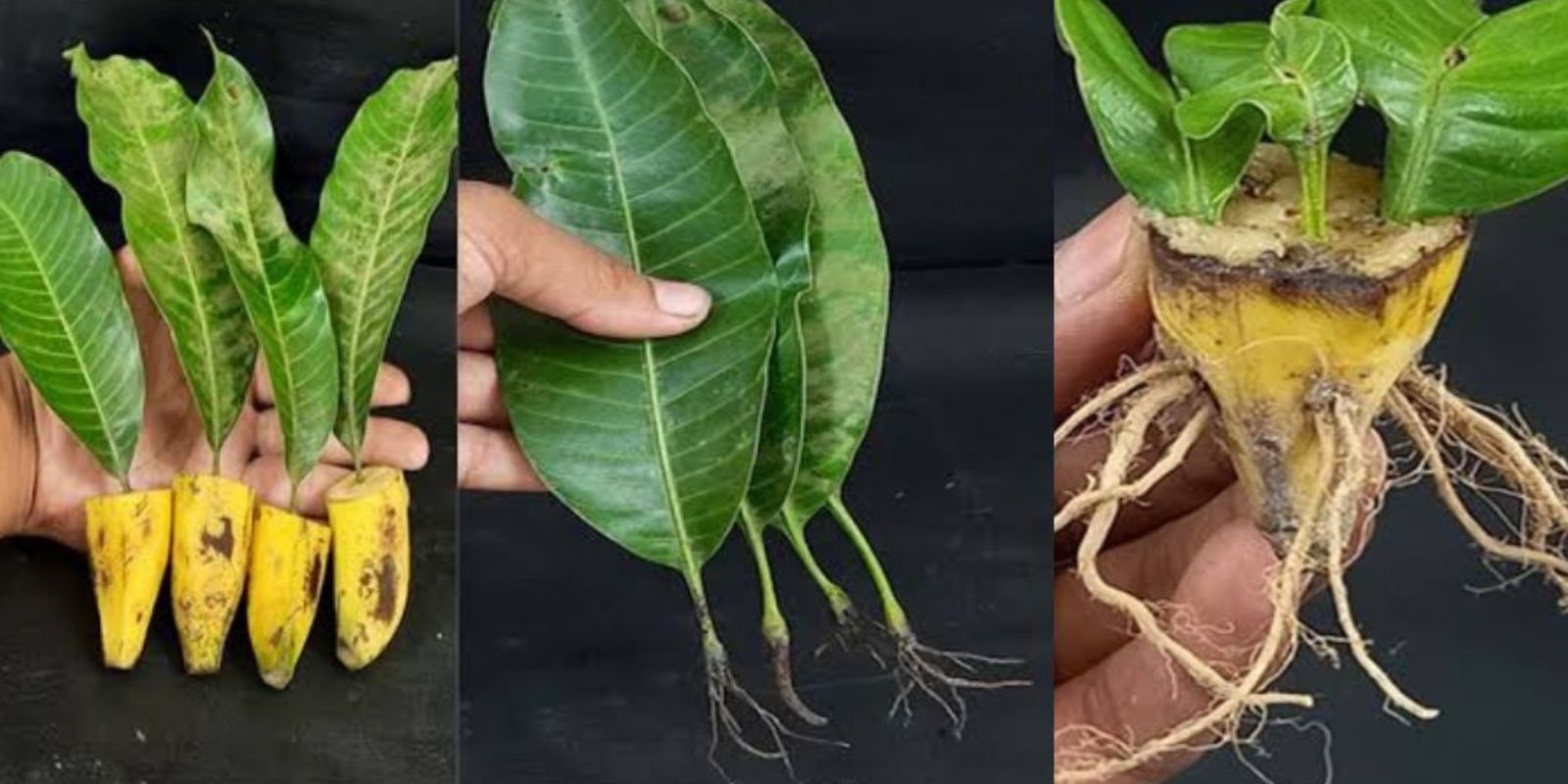Growing mango trees from leaves is a unique and challenging gardening method. While traditional approaches such as planting seeds or grafting are more reliable, using mango leaves for propagation is an exciting experiment for gardening enthusiasts who enjoy exploring unconventional techniques. This guide will walk you through the process of cultivating mango trees from leaves, enhanced with a natural banana-based rooting solution. Let’s dive into the fascinating journey of nurturing mango plants from leaves!
Why Grow Mango Trees from Leaves?
The idea of propagating mango trees from leaves may sound ambitious, but it can be a fun and educational project. Mangoes, known as the “king of fruits,” are a tropical delight enjoyed worldwide. By growing mango trees at home, you can produce fresh, organic fruit while adding a lush tropical vibe to your garden or indoor space. While this method is experimental and requires patience, it offers a rewarding experience for passionate gardeners.
Materials You’ll Need
To get started, gather the following materials:
- Fresh and healthy mango leaves (preferably from a disease-free mango tree).
- A potting soil mix suitable for tropical plants.
- Planting containers or pots with drainage holes.
- A clear plastic bag or plastic wrap to create a humid environment.
- A spray bottle or watering can for keeping the soil moist.
- A warm and humid environment for optimal growth.
- Banana peels to prepare a natural rooting solution.
Step-by-Step Guide to Growing Mango Trees from Leaves
Step 1: Select Healthy Mango Leaves
Begin by choosing mature, healthy leaves from a mango tree that produces high-quality fruit. Avoid leaves that are damaged, discolored, or infested with pests. The health of the leaf will greatly influence the success of the propagation process.
Step 2: Prepare the Soil
Use a well-draining potting mix suitable for tropical plants. This can include a mixture of garden soil, compost, and sand to ensure proper drainage. Fill the planting container with this soil mixture, leaving enough space to insert the mango leaves.
Step 3: Prepare the Leaves for Planting
Cut the mango leaves into sections approximately 15 cm long. Remove the bottom portion of the stem while leaving a small piece of the stem attached to the leaf. This stem will be inserted into the soil to encourage rooting.
Step 4: Plant the Mango Leaves
Using your finger or a pencil, create small holes in the soil. Insert the prepared mango leaf sections into the holes, burying about 2.5 cm of the stem. Press the soil gently around the stem to secure the leaves in place.
Step 5: Create a Mini Greenhouse
Cover the container with a clear plastic bag or plastic wrap to create a humid environment that promotes root development. Ensure that the plastic does not touch the leaves, as this can lead to fungal issues. This mini greenhouse will help retain moisture and warmth, both of which are essential for rooting.
Step 6: Maintain Humidity and Moisture
Place the setup in a warm and bright location, but avoid direct sunlight, which can scorch the leaves. Use a spray bottle to mist the soil and leaves regularly, ensuring that the environment remains consistently humid. If condensation forms on the plastic cover, it’s a good sign that the humidity level is sufficient.
Step 7: Prepare and Use a Banana Rooting Solution
Bananas are rich in potassium and other nutrients that can enhance root development. To create a natural rooting solution:
- Cut a banana peel into small pieces.
- Blend the pieces with water to create a nutrient-rich solution.
- Dip the base of the mango leaf sections into this solution before planting them in the soil.
This step provides an extra boost to encourage root growth and increases the chances of success.
Step 8: Monitor Growth and Look for Signs of Rooting
Over the next few weeks, observe the mango leaves for signs of growth. New shoots and roots may begin to develop at the base of the leaves. Keep the soil moist but not waterlogged, as excessive moisture can lead to rot.
Step 9: Transplant the Growing Mango Plants
Once the new shoots have grown a few centimeters and roots have developed, carefully transplant the plants into larger pots with fresh, well-draining soil. Gradually acclimate the young mango plants to more sunlight by increasing their exposure over time.
Important Considerations
While this method is intriguing, it is important to manage your expectations. Here are some key points to keep in mind:
- Low Success Rate: Growing mango trees from leaves is experimental and not as reliable as traditional propagation methods such as seeds or grafting.
- Patience is Key: It can take several months for roots and shoots to develop, so patience is essential.
- Not All Varieties Work: Certain mango varieties may not respond well to this propagation method.
- Optimal Conditions are Crucial: Warmth, humidity, and consistent care are necessary for success.
If you’re looking for a more dependable way to grow mango trees, consider using seeds, grafting techniques, or air layering. However, the unique approach of growing mango trees from leaves can be a fun project for curious gardeners.
Benefits of Using a Banana Rooting Solution
Adding a banana-based rooting solution to the process offers several advantages:
- Natural and Eco-Friendly: This method eliminates the need for chemical rooting hormones.
- Nutrient Boost: Bananas are rich in potassium, phosphorus, and calcium, which aid in root development.
- Cost-Effective: Utilizing banana peels is a simple and inexpensive way to enhance plant growth.
Conclusion
Cultivating mango trees from leaves is a challenging yet rewarding gardening experiment that showcases the beauty of nature’s possibilities. While the success rate is relatively low, the experience of nurturing leaves into potential trees is invaluable for plant enthusiasts. By incorporating a natural banana rooting solution, you can give your mango leaves the best chance to thrive.
💬 Have you ever tried propagating plants using unconventional methods like this? Share your experience or ask questions below—we’d love to hear from you!

